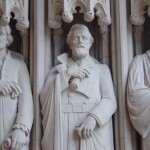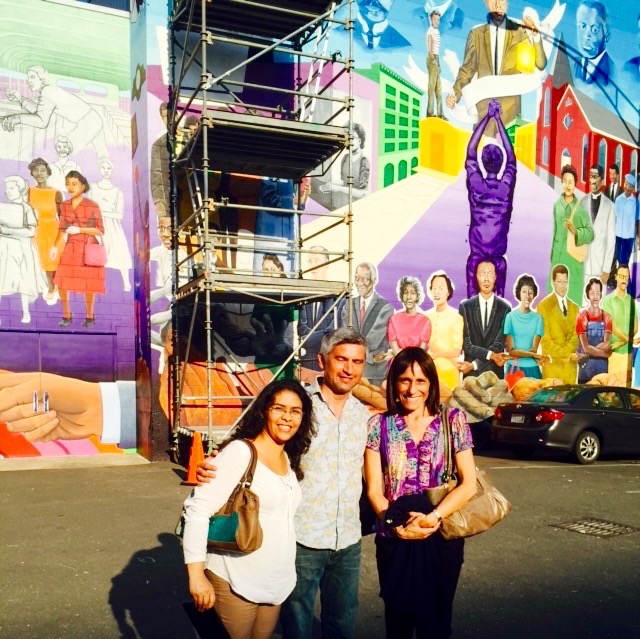Working in a university is a little like living in a fast-forward nature video. While I molder in my chair, the students swirling around me only get younger. They blossom, bloom and before the petals fall are off changing the world.
I’ve learned to ration the Star Trek references – yes, even the J.J. Abrams reboot is getting a little dusty – and keep a straight face when the wide-eyed undergrad looks blankly at me when I mention dinosaurs like Henry Kissinger or Mao Zedong (however we ended up spelling his name).
There’s one bit of history I insist my students learn: their own university’s. Inextricable is the history of the city that’s my home (and theirs temporarily at least).
Durham has a number of important ways to tell its story. On Parrish Street, sculptures mark how black business helped build a thriving community, bolstered by associations, churches and schools. The Durham History Hub has changing exhibits. Between
performances, you can take the elevator to the Carolina’s third floor for the micro-display on the protests that helped end segregation.
The gorgeous new mural beside the Durham Arts Council depicts both well-known visitors, like the Rev. Martin Luther King Jr., and resident heroes like Pauli Murray. Murray’s house, in the West End, was recently declared a National Treasure by the National Trust for Historic Preservation and will undergo needed renovations later this year.
But what about history at Duke? Where can a curious undergraduate find out about more than the last Final Four win?
Despite the construction constantly underway on campus, little space and no money have been allocated to marking the university’s own past.
To be sure, the founders – grim Washington Duke, from his East Campus Barcalounger, and the imperious, cigar-chomping James B. – survey each new crop of students with bronzed eyes. But where is the African-American architect whose designs come alive in rust-and-gray Duke stone (hint: there’s something in the Allen Building, also the unheralded locus of Sixties protests). Despite the university’s much vaunted “global” reach, there’s no recognition of the first international student (hint: he helped finance the revolution that brought down the Manchu dynasty and create the Republic of China under friend Sun Yat-Sen).

Duke Chapel entrance
Students enter Duke Chapel dozens of times while on campus. But not a single one, when I’ve asked, has ever been able to identify for me the three statues to the right of the gothic entryway (the statues to the left are surely extra credit questions on the Div Student final exam). Completed in 1932, the Chapel is a potent symbol of the Duke family’s aspirations and financial muscle (and, as one dissertation wag once commented, the male appendage that struts toward Baldwin Auditorium’s more uterine curves).
Need a hint? I sort of get the Southern intellectual and founding father on the far left. But 70 years after a disastrous civil war, why did the Dukes give General Robert E. Lee pride of place in the center? He didn’t even surrender here, having ceded that ignominious chore to Gen. Joseph E. Johnston.
When I showed the statues to a recent visitor from Northern Ireland, he shrugged. “Rich people do funny things,” was his only comment.
The third figure is truly a stumper: Sidney Lanier, “poet” of the Confederacy.
There’s a troubling effect of this lack of history-telling. Those of us confronting issues of campus racism and intolerance could really use a couple of sites on campus to foster knowledge about a past that’s still painfully present. In April, a student hung a noose near the bookstore, later claiming that he did so in jest and without understanding its vile power. The sad fact is that there’s very little on campus that teaches students about the history they’re stepping into – and sometimes swirling up.
Some students have pushed to remove the names of segregationists from campus buildings, as a show of greater tolerance and equality. I’m not convinced that erasing the less savory elements of Duke’s past is the right way to go, especially when there’s still so much work to do. On this, I’m for more – leave the segregationists as a cautionary tale, and add in the freedom fighters, the barrier-busters, the firsts over the wire. The Unsung Founders Memorial in Chapel Hill is an important model, commemorating the enslaved people who build the campus.
In my class this spring, only one of 16 students even knew where the infamous lacrosse house was located (and is no more). For them, the case seems as distant as the day General Lee’s CSA buckle was chiseled into stone. This student later confessed that she went back to her room to Google the case in private, since she didn’t want to offend anyone by asking.
We shouldn’t just be remembering ourselves at our best and covering up the icky stuff. Unfortunately, it’s the icky stuff that tends to stick around.
From the Durham News, May 31, 2015




